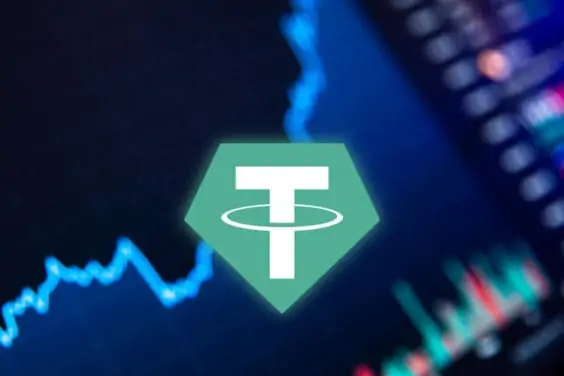The number of active blockchain wallets recently reached 78 million, solidifying the fact that the cryptocurrency market is not only growing rapidly but is becoming an irreplaceable part of the global financial system.
Unless you live off the grid, you have probably heard about Bitcoin (BTC). It first experienced a surge in popularity back in 2017 when its price hit the first significant record of $20,000.
Since then, Bitcoin has seen many ups and downs. In 2018, it fell below $3,000, and several years later broke a new record surpassing $60,000.
As of today, it is the most valued cryptocurrency of all and accounts for 41% of the entire $2+ trillion cryptocurrency market.
Although many have heard of Bitcoin, it is not uncommon to find that only a few understand its key features, advantages, downsides, and how it works.
To give you a good understanding of what Bitcoin is and why it has revolutionized the financial market, we have written this extensive Bitcoin guide for beginners.
We will walk you through the BTC world and show you how to buy, sell, store, mine, and invest in Bitcoin.
What is Bitcoin?
Before we dive into the technical analysis of Bitcoin, let’s first determine what it is and why it was created.
Bitcoin or BTC is the first and most popular cryptocurrency. Simply put, it is digital money that operates without a regulator or government involvement. No single person or financial institution can control the Bitcoin network.
How Does Bitcoin Work?
In 2008 someone under the pseudonym Satoshi Nakamoto introduced a fundamentally new payment system that differs significantly from the traditional banking industry.
The underlying concept for this payment system is that information is distributed through public channels, between computers united on one network. These computers remain equal and jointly control the network’s functioning. There is no way to interfere or impact the system while information is distributed across all computers.
If a user sends money or information through the blockchain, it cannot be altered or tampered with since hundreds of thousands of computers around the world confirm it.
Bitcoin uses a unique technology called the blockchain. It can be described as an open database that contains records of all transactions in the Bitcoin network.
The data for several transactions are combined into a block. The blocks are then integrated into a chain, hence the name ‘blockchain’. It originates from the very first transaction carried out in the network. New blocks are added to the blockchain after solving a complex cryptographic problem.
1. Decentralization
As already briefly stated, the Bitcoin system cannot be controlled by any organization or person in the world. This leads to one of its main features — decentralization.
Unlike the traditional banking industry, there is no central computer that controls the network. Even Satoshi Nakamoto, the creator of the first cryptocurrency, decided to leave the project in 2010.
After that, Bitcoin’s fate has fallen into the hands of independent developers. They receive donations for their input from the Bitcoin Foundation and use grant money from commercial organizations.
2. Peer-to-peer
Another essential feature of Bitcoin is a peer-to-peer network. It means that transactions take place directly between participants — buyer and seller.
For a better understanding, let’s compare the Bitcoin system to traditional banking.
If you want to send someone US dollars, for instance, you use banks. They serve as intermediaries for the transaction.
When it comes to Bitcoin and other cryptocurrencies, there is no need for a middle-man. You can interact directly with other network participants, making the transactions cheaper and faster as a result.
3. Limited emission
Limited emission is an undisputed advantage of the first cryptocurrency. In total, only 21 million Bitcoins can ever be mined. No more, no less.
New Bitcoins are created when a network participant adds a new block to the chain. The frequency at which blocks are made is relatively constant -one block in 10 minutes.
It is also important to note that the number of issued coins is programmed to decrease. This process is called halving: every four years, a 50% reduction in emission takes place.
Take the US dollar, for example. During the past year, its inflation rate has grown to almost 6%. Billions of dollars were printed to support the economy during the COVID-19 pandemic.
It’s no wonder that more and more investors are choosing to hold Bitcoin — fiat currencies have simply become too inflationary and unstable.
4. Not backed by any commodity
One of the major arguments against cryptocurrencies is that they are not backed up by gold, silver, oil, or any other commodity. However, the same goes for fiat currencies.
For instance, the US dollar is only backed up by the full faith and credit of the government and the Federal Reserve. You can no longer come to the bank and exchange your cash for gold.
Bitcoin and other cryptocurrencies are also not backed by anything. It’s pure math. Satoshi Nakamoto wanted to create a semblance of gold rather than regular fiat money. There is a limited amount of gold in the world. You won’t be able to get more gold than there already is.
Bitcoin is very similar in this regard. When all 21 million coins are mined, the subsequent emission will be stopped so that inflation does not occur.
The price of Bitcoin entirely depends on the supply-to-demand ratio. If there are more buyers on the market, the price starts to rise. However, when more people sell their coins, Bitcoin experiences a rate decrease.
As a result, BTC is a highly volatile asset. It means that its price can experience significant fluctuations over a short period of time.
5. Anonymity
Anonymity is what Bitcoin and other digital currencies are famous for. To send someone money using a banking service, you will have to disclose your personal information, including name, address, and ID documents.
To become a member of the Bitcoin network and exchange coins, on the other hand, you don’t need to share any private information. Of course, the blockchain is an open-source ledger, and anyone can view details of any transaction. However, your identity will remain unknown to others.
It remains to be seen how government regulation around the world will impact Bitcoin’s anonymity in the future.
Related: Best Apps To Buy Bitcoin in Canada.

How to Buy Bitcoin?
We have already covered the basics of Bitcoin technology. Now, let’s discuss the most popular ways to buy and sell Bitcoin.
Cryptocurrency Exchange
The most popular way to buy Bitcoin is via a cryptocurrency exchange.
Cryptocurrency exchanges are very similar to regular stock exchanges. The main difference is that you purchase digital money rather than stocks.
The exchange platform offers various trading tools that allow users to easily buy and sell the most popular cryptocurrencies such as Bitcoin, Litecoin, Ethereum, Ripple, Cardano, etc.
The exchange usually has a high-quality security system to protect users’ assets. Security measures include insurance funds, hacker blocking tools, and built-in anti-fraud programs.
The main advantage of crypto exchanges is their convenience and user-friendly interface. Even a beginner is able to buy and sell crypto in just a few clicks effortlessly.
That said, there are some drawbacks as well. First, the registration process may take some time since most platforms require users to undergo mandatory verification. You may be asked to provide ID documents and confirm the source of funds confirmation.
The most popular crypto exchanges in Canada include:
- CoinSmart
- NDAX
- Bitbuy
- Coinsquare
- Coinbase
Cryptocurrency Broker
A cryptocurrency broker acts as a middle-man between traders and the market and helps to make cryptocurrency transactions in exchange for a fee.
Trading on a regular crypto exchange requires knowledge and skills that a beginner does not yet possess. The brokerage company, on the other hand, assists traders at all stages: creating an account, placing buy and sell orders, searching for suitable counterparties, etc.
On cryptocurrency exchanges, traders form the asset price by creating supply and demand. Brokers, on the other hand, can determine the asset’s price. Rates on well-known exchanges, liquidity providers, and financial agencies can be used as a basis.
Crypto broker advantages:
- excellent support and one-click trades
- personal approach
- beginner-friendly
Crypto broker disadvantages:
- higher trading fees
- may not support moving your coins offline to a personal hardware wallet.
The most popular crypto brokers in Canada include Wealthsimple Crypto, Coinberry, Mogo Crypto, and Shakepay.
P2P Platform
A P2P platform can be defined as an ad aggregator. It is a marketplace where users can buy and sell cryptocurrencies.
For example, if you want to buy 1 Bitcoin. You look for the right offer on the platform, contact the seller, and finalize the terms. After that, the transaction takes place. The platform serves as a middle-man between market players.
There are no complex identity checks on P2P platforms. Usually, you only have to provide your email address.
There are no additional trading tools on P2P platforms: you can only buy and sell the asset. Moreover, the range of available crypto coins is usually limited.
The most popular crypto P2P platforms Paxful, Localbitcoins, Hodl Hodl, and Binance P2P.
Regardless of what service you choose to buy Bitcoin, the reliability and security of the platform are essential. To select a trustworthy and convenient website, pay attention to:
- Online reviews and ratings
- Licence and registration
- Reputation
- Fees
How to Store Bitcoin?
Bitcoin, as well as any other cryptocurrency, is stored in a special wallet. However, don’t confuse a crypto wallet with a regular oner where you put cash.
A crypto wallet does not store your coins — they are stored in the blockchain. A wallet is special software that allows you to interact with the blockchain and perform transactions.
Each wallet contains private and public keys.
The public key is a digital string available to anyone in the network. It consists of letters and symbols and is used when sending funds to a wallet.
The public key can be compared to an email address. Others use it to send you letters.
A private key can be described as a security key made up of cryptographically generated random numbers that cannot be cracked.
A private key can be compared to a password. You use it to log into the system and confirm the ownership of the wallet.
From this perspective, a public key is a wallet address others need to send you coins. On the other hand, you should never disclose your private key since it gives others access to take over your wallet and steal the funds.
Best Bitcoin Wallets
There are several types of wallets you can use to store your Bitcoins. The choice should depend on your personal preferences and goals.
Hot vs cold wallets
All crypto wallets can be divided into two main types: hot and cold wallets. The former refers to a wallet connected to the Internet. Cold wallets, on the contrary, are offline.
Hot wallets are considered to be of higher riks compared to cols ones. Since they are online-based programs, fraudsters can hack hot wallets to steal users’ funds.
Cold wallets are not connected to the Internet, and therefore it is almost impossible to tamper with them.
Hot wallets are often used to store a small or moderate amount of cryptocurrency. For larger crypto investments, cold wallets are better for achieving maximum security.
Hot cryptocurrency wallets include:
1. Web wallets
When you register on the exchange or exchanger, a crypto wallet is automatically created. It is the most suitable choice for beginners as the process of storing and buying crypto is straightforward on such platforms.
However, you must remember that exchanges have access to your private keys and can control the account. Choose only reliable websites.
The most popular crypto web wallets include Exodus, Electrum, NDAX, CoinSmart, Binance, and Wealthsimple Crypto.
2. Desktop and mobile wallets
These are the most convenient and popular types of wallets. It is an app that can be installed on a computer or smartphone. Such wallets offer a user-friendly interface and fast payments. Many modern crypto exchanges have mobile apps.
Hardware wallets
Hardware wallets are often used to store a significant amount of cryptocurrency funds. They are small flash drive-like devices that can be connected to a computer.
The main goal of hardware wallets is to simplify long-term storage. Due to their mobility, you can take the device with you anywhere or hide it in a safe place.
The most famous hardware wallets manufacturers are Ledger and Trezor.
Paper wallets
A paper wallet is a sheet of paper with data for sending and receiving funds and a seed phrase for restoring access printed on it.
It can be stored, for example, in a safe.
How to Mine Bitcoin?
There is more than one way to get Bitcoin. While we have already covered how to buy cryptocurrency. You can also acquire Bitcoins via mining.
Mining is the process of adding a new block to the chain. It serves as the only emission method for the Bitcoin network — for adding a new block, miners receive the reward in Bitcoin.
Since there are only 21 million Bitcoins that can be mined, the reward for the new block decreases every four years. When the first cryptocurrency was created, miners received 50 BTC. However, as of 2021, the compensation was set at 6.25 BTC.
We will not bore you with the complex specifics of Bitcoin mining. Simply put, adding a new block means solving a complex mathematical puzzle. The first miner to find the answer adds a new block into the chain and gets a reward.
Since the Bitcoin network is rapidly growing, puzzles have become more and more complex. To solve them, miners use powerful computers. At first, you could mine Bitcoins on a regular PC. Nowadays you need thousands of dollars to invest in the equipment and electricity costs.
Bitcoin vs Altcoins
Although Bitcoin is the first and foremost cryptocurrency, there are thousands of crypto projects on the market today (12,613 as of this writing as per CoinMarketCap).
Despite all the advantages of BTC, it was a flagship cryptocurrency that has its fair share of drawbacks. As a result, thousands of alternative coins or altcoins came about.
An altcoin is any other cryptocurrency created after Bitcoin. Their main goal is to build on the BTC technology and solve the network’s problems.
Bitcoin vs Bitcoin Cash
In August 2017, the Bitcoin blockchain split into two separate blockchains. As a result, a new cryptocurrency, Bitcoin Cash, was created. The main goal of BCH was to solve Bitcoin’s scalability issues.
The critical difference between BTC and BCH is the block size. The Bitcoin network limits blocks to 1 MB, while Bitcoin Cash offers an 8 MB block. Let’s look at the numbers: BTC block can contain data of 2,500 transactions, while BCH blocks, it is 7,000.
Bitcoin vs Ethereum
Ethereum is considered the leading altcoin and ranks second among other cryptocurrencies in terms of capitalization after bitcoin. The project was launched in 2015 by a famous developer, Vitalik Buterin.
The main advantage of Ethereum is the smart-contract technology. It allows other developers to create their crypto coins on the Ethereum blockchain. This makes the process much cheaper and faster.
Related: How To Buy Ethereum in Canada.
Bitcoin vs Dogecoin
Dogecoin is a meme-based cryptocurrency created as a joke in 2013 and its protocol is based on the Litecoin cryptocurrency.
Several features distinguish Bitcoin and Dogecoin. Most importantly, mining in the Dogecoin network is currently unlimited. It means that miners can continue to add blocks and earn rewards all the time.
Related: How To Buy Dogecoin in Canada.
Bitcoin Price
Bitcoin’s price is based solely on demand and supply. Since the coin was introduced to the public, its rate has experienced severe ups and downs.
In 2008, BTC was worth less than a dollar. The first spike can be traced to 2011 when Bitcoin went from $1 to $30 in less than three months. However, by November of that year, the market has dropped again, and the Bitcoin price was reduced to $2.
In 2013 two significant BTC price bubbles occurred. First, the cryptocurrency’s price reached $220 in April. Nevertheless, the growth was followed by a sharp decrease – in October 2013, Bitcoin traded at the $120-$130 range.
2017 was crucial for the first crypto coin – BTC experienced a significant surge in popularity due to its rapid growth. In December, Bitcoin hit its first significant all-time high and surpassed $20,000.
Over the next two years, the price mainly decreased. By the end of 2019, BTC fell from $20,000 to $7,000. However, things took an unexpected turn in 2020.
Governments around the world were printing money (billions and billions of dollars) to support their economy. This led to a high level of uncertainty among investors – they feared the inflation of fiat currencies would skyrocket due to increased emission.
As a result, more and more people started to invest in Bitcoin, and the coin’s price started to grow once again. In December 2020, BTC surpassed $20,000, and less than a year later, Bitcoin hit a new maximum – $66,000.
As of January 2022, the first cryptocurrency’s price is in the range of $41,000-$57,000.
Bitcoin Price Predictions
Bitcoin, as well as the majority of cryptocurrencies, is highly volatile. Its history shows that the price can experience a 3000% growth and then fall drastically in one day. In this regard, it is impossible to predict the future of the coin.
That said, many financial analysts believe that Bitcoin has strong growth potential. Finder, a popular finance tracking platform, has also recently shared its Bitcoin predictions for the future.
The company conducted a survey featuring 40+ financial experts. 60% agreed that BTC is undervalued and will grow in price. Several survey participants also expect the first cryptocurrency to exceed $300,000 by 2025.
Summing up
There is no denying that Bitcoin remains the number-one cryptocurrency on the market.
Even though there are more than 12,000 cryptocurrencies on the market, investors prefer BTC as a more stable and safe choice.
The history of the coin shows that it has strong potential for development and growth. Crypto’s adoption level is rising as more and more financial institutions recognize the benefits and importance of cryptocurrencies for the global economy.
We hope that the experts are right about their bold predictions, and Bitcoin will, in fact, reach the $300,000 mark during the next five years.
Related:




